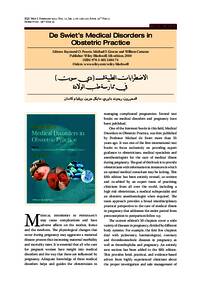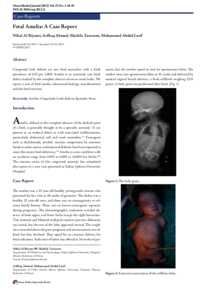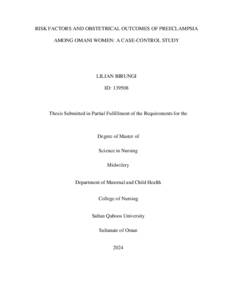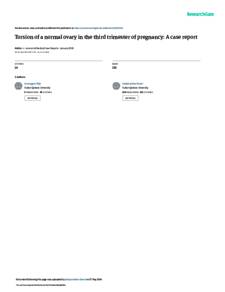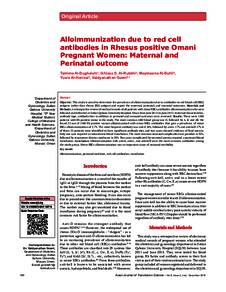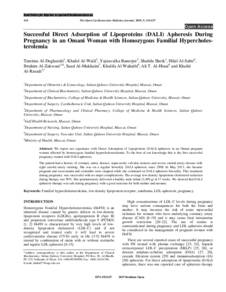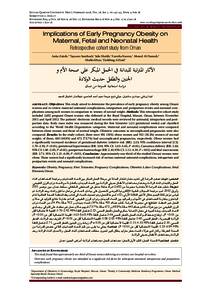Document
Incidence, risk factors, maternal and neonatal outcomes of peripartum cardiomyopathy (PPCM) in Oman.
Identifier
DOI: 10.5334/gh.1198
Contributors
Al-Khayariyah, Safa., Author
Al-Zadjaliyah, Riham., Author
Machado, Lovina., Author
Al-Madhaniyah, Alya., Author
Al-Lawati, Hatim., Author
Publisher
Al-Riyamiyah, Nihal, Al-Khayariyah, Safa, Al-Zadjaliyah, Riham, Machado, Lovina, Al-Madhaniyah, Alya, & Al-Lawati, Hatim (2023). Incidence, risk factors, maternal and neonatal outcomes of peripartum cardiomyopathy (PPCM) in Oman. Global Heart, 18 (1), [1-
Gregorian
2023-05
Language
English
English abstract
Background: Peripartum cardiomyopathy (PPCM) is an idiopathic life-threatening condition occurring towards the end of pregnancy or in the first few months following delivery that might affect the maternal and neonatal outcomes.
Objectives: To assess the incidence and to evaluate the antenatal risk factors and the maternal and neonatal outcomes in Omani women diagnosed with PPCM.
Methods: A retrospective cohort study was conducted at two tertiary institutions in Oman between the 1st of January 2010 to the 31st of December 2018. All cases fitting the standard definition of PPCM were included in the analysis. Patients with pre-existing dilated cardiomyopathy, chronic obstructive pulmonary disease and significant valvular heart disease have been excluded.
Results: A total of 113,104 deliveries were screened during the study period. PPCM was confirmed in 116 cases with an incidence of 1.02 per 1000 deliveries. Independent predictors for the development of PPCM were age; especially women at the mid reproductive age (26–35 years), singleton pregnancy and gestational hypertension. In general, maternal outcomes were favorable, with full recovery of left ventricular ejection fraction in 56.0%, recurrence of 9.2%, and an overall mortality rate of 3.4%. The most common maternal complication was pulmonary edema (16.3%). The neonatal mortality rate was 4.3% and the preterm birth rate was 35.7%. Neonatal outcomes included 94.3% live births, out of which 64.3% were term with Apgar scores of more than 7 at five minutes in 91.5% of the neonates.
Conclusion: Our study resulted in an overall incidence of PCCM in Oman of 1.02 in 1000 deliveries. Given the significance of maternal and neonatal complications, establishing a national PPCM database and local practice guidelines, and emphasizing their implementations in all regional hospitals, are fundamental for early recognition of the disease, timely referral, and application of therapy. Future studies, with a clearly defined control group, are highly recommended to appraise the significance of antenatal comorbidities in PPCM compared to non-PPCM cases.
Member of
Resource URL
Category
Journal articles



